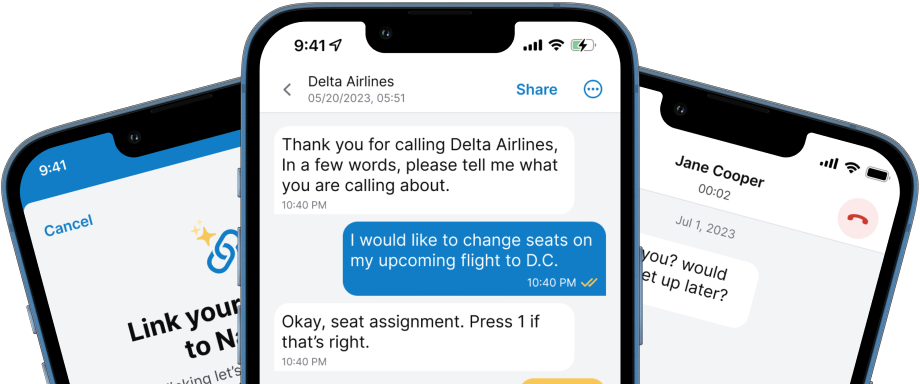Understanding the Differences Between Transcriptionists and Captioners
Find out what are the differences between transcriptionists and captioners in our insightful article. Click here to read more!

Transcripts and captions may seem like mere additions to audio and video content, but their significance extends far beyond words on a screen or document. For the deaf and hard of hearing, they become lifelines to understanding content that was previously inaccessible. These features also extend their benefits to a diverse array of users, enriching the experiences of people who:
- Are not fluent in that video’s language, possibly ESL speakers
- Are unaccustomed to the speaker’s accent
- Learn best by reading aloud
- Watch videos in a noisy environment
- Have learning disabilities or attention deficit disorders
In today's digital age, the demand for converting spoken language into written text has grown significantly.
In this blog post, we'll delve into the key differences between these two essential services.
Transcription:
Transcription is the process by which speech or audio is converted into a written document for reading. Transcripts generally do not have any time information attached to them. There are two different types of transcripts and they are:
- Verbatim: transcribes the audio word-for-word and is usually most beneficial for scripted speech like a TV show, movie, or skit
- Clean Read: Edits the text for clarity, and is better for unscripted content like sit-down interviews and recorded speaking events
Since search engines can’t physically watch a video, they have no way of ranking video content and this is where transcripts come in; they let search engines “read” the video’s content, which allows for the video to be properly indexed and ranked on results pages. Additionally, they can be the perfect introduction to creating closed captions in-house and making content fully accessible.
There are many uses for transcripts in other industries and formal settings such as:
- Business meetings
- Interviews
- Academic lectures
- Legal proceedings
- Medical reports
In summary, transcriptions serve as invaluable tools for capturing spoken content in written form and preserving valubale information for future reference.
Captions:
One of the biggest reasons for the use of captioning is the accessibility it gives to individuals who are deaf or hard of hearing and cannot hear the audio of what they are watching, as well as viewers who prefer to watch content with the sound muted.
Producers place captions at the bottom of the television screen so individuals watching the video can read the captions while simultaneously watching the video. Captions must be synchronized with the audio and displayed in a way that enhances the viewer's experience.
Captions are commonly used in:
- Broadcast television
- Online video platforms
- Educational content
- Movies
- Live events
There are two different types of captioning that we come across:
- Offline captioning: This refers to any captioning performed from pre-recorded audio or video files, such as a taped TV show, movie or online video.
- Real-time captioning: This is when a captioner transcribes live events like sporting events, concerts, broadcasts, and live television shows. This type of captioning is more advanced as it requires high levels of accuracy and speed.
There are also many services that use captions within their apps, media tools, or video games for informative, accessibility, and entertainment purposes. For instance, Nagish also uses captions as a part of their phone call experiences within the app, delivering content to users by using text-to-speech software to do so. Captions within the app are also adjustable depending on the user’s preferences.
Captions need to indicate sounds heard on screen. These identifiers, which we call atmospherics, provide visual indicators of non-verbal sounds to viewers. For example:
- Bright piano music
- Jet engine roaring
- Audience cheering
- Car honking
- Loud laughter
The ultimate goal of captions is to give the viewer as close to the same experience as the hearing viewer.
Benefits of Transcription
- Added content for audio and videos
- Better accessibility and easier translation to different languages
- Improved comprehension by ESL listeners or those who are hearing impaired
Benefits of Captioning
- Helps people with comprehending dialogue in media
- Enables viewers to watch media in a sound-sensitive setting with volume muted
- Allows media content to be accessible to those who are hearing impaired
Transcriptionists vs. Captioners
Transcription services do not work with visuals, and the captioners work heavily with visuals and need an understanding of the context put forth by the video file in order to procure accurate captioning.
Many transcriptionists also rely on editing software that auto-transcribes recordings which they then edit for accuracy with their listening skills. Transcriptionists mainly use audio playback software, text editing software, and foot pedals to control audio playback. captioners are more focused on using specialized captioning software that enables them to time-sync captions with video content.
One unique thing about captioning is that captioners need to be well versed in breaking captions down into groups for best readability. They also need expertise in timing and synchronization to ensure the captions appear on screen in harmony with the audio.
Conclusion
In summary, while both transcripts and captions play essential roles in converting spoken language into written form, they have distinct structures and cater to different needs. As the world continues to embrace digital content and prioritize accessibility, the demand for skilled transcriptionists and captioners will undoubtedly continue to grow, making their roles ever more critical in our modern communication landscape.



![Why Should Movie Theaters Include Open Captions? [Plus, Reasons You Probably Didn’t Consider]](https://assets-global.website-files.com/639ce4c7e9b4747c3b0faf59/6440443d47e37f55776c38cc_jakob-owens-CiUR8zISX60-unsplash.jpg)

